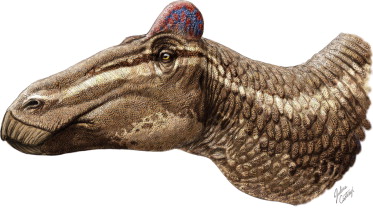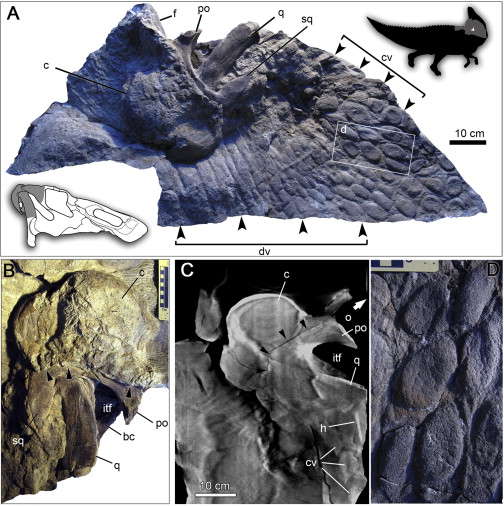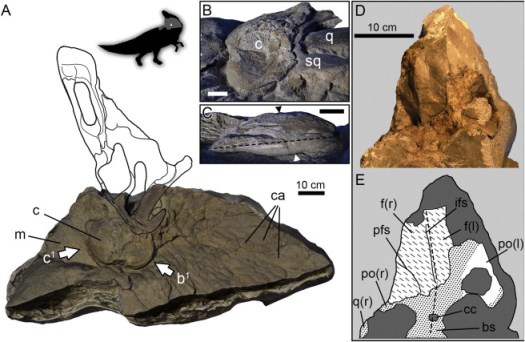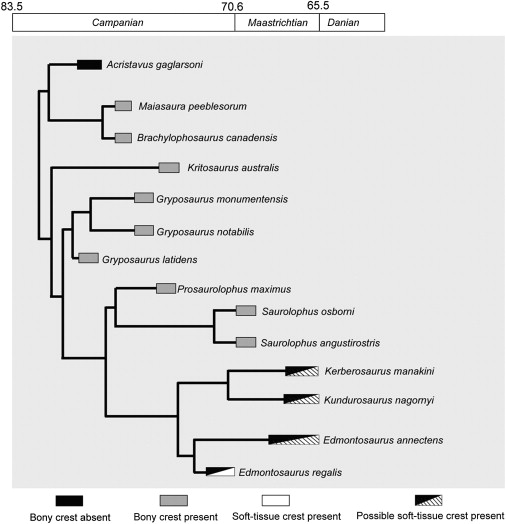Absolutely no sniggering – the dinosaur that looked like a cock
This was originally posted at: http://blogs.egu.eu/palaeoblog/?p=1008
Dinosaur skeletons are a thing of pure beauty. Being able to see and touch something that has been dead for millions of years instills a sense of wonder; what did they look like, how did they behave, were they like anything we see today? Palaeontology is a science that raises more questions than it answers, but these questions are the ones that drive the science, but also maintain that sense of fascination that no other scientific field can lay claim to.
Every now and then, we are blessed with a true jewel. Many can lay claims to the discovery of a dinosaur bone, even fewer to that of a whole skeleton. Celebrity status is achieved when one finds something that truly stands out, a dinosaur preserved in immortality with flesh, and these are the rarest of all.
Scene. Alberta, 72 million years ago. Geoff the dinosaur is happily grazing by a river, when all of a sudden, he’s struck by a random act of fate – he’s been over-charged on his latest gas bill, and suffers a heart attack, collapsing on the edge of a river. Laura the tyrannosaur sees this, and snoops in for a tasty meal, but before she can, there’s a roar in the background, and a surge of water, not seen since that odd scene in the Lord of the Rings where Arwen summons hydro-horses to smack down the ringwraiths, floods in and swoops ex-Geoff away, before covering him in a fine layer of sediment.
Scene. Really boring nothingness for the next 72 million years. Fortunately, as Geoff was buried so fast, something spectacularly infrequent happened. Unlike most dinosaurs, were the soft flesh bows politely to the ravages of time and decays away, some of Geoff remained stoic, surviving to this day. Goeff is a hadrosaur, one known as Edmontosaurus regalis, and a proper plant muncher, with immense tooth batteries that were designed for one thing: world domination. Ok, not true, designed for mass decimation and processing of plant material, as part of an organic machine that was once the world’s most powerful herbivore. But the unique thing about Geoff relates to his special preservation.

Because he was buried so fast, a lot of his skin and flesh remained to become fossilised, replaced by minerals over millions of years. In the study describing this intriguing dino, the noteworthy bit is described as a “conspicuous dome of integument”, connected on top of the skull, which is pretty much science for ‘weird blob of mush’. But this thing was big – 20cm in height and 33cm long, making it one interesting blob. The structure is also known as a ‘cocks comb’, an aspect of this that could probably have been completely ignored during publication.

Now, bony crests in hadrosaurs have a long history. For example, the long, recurved bony tube in Parasaurolophus is thought to have been used in communication like a wind instrument, or possibly even as a snorkel for breathing underwater. Crests of pure soft tissue are a rare find though, and have potentially interesting implications for evolution of hadrosaur dinosaurs.

For example, among hadrosaurids, is this a unique feature, or autapomorphy, of Edmontosaurus regalis, or something more widespread but just not preserved? If so, at which point did it evolve and why? Was it used for a kind of sexual display, or differentiating between sexes? As mentioned above, this rather amazing find raises more questions than it solves, but really, isn’t this what science is about? Discovery? And if you’d like to be more sceptical, it gives scientists something to base their next grant proposal on, and the cycle doth continue.

Reference:
Bell, P. R., Fanti, F., Currie, P. J. and Arbour, V. M. (2014) A mummified duck-billed dinosaur with a soft-tissue cock’s comb, Current Biology, 24(1), 70-75 (link)